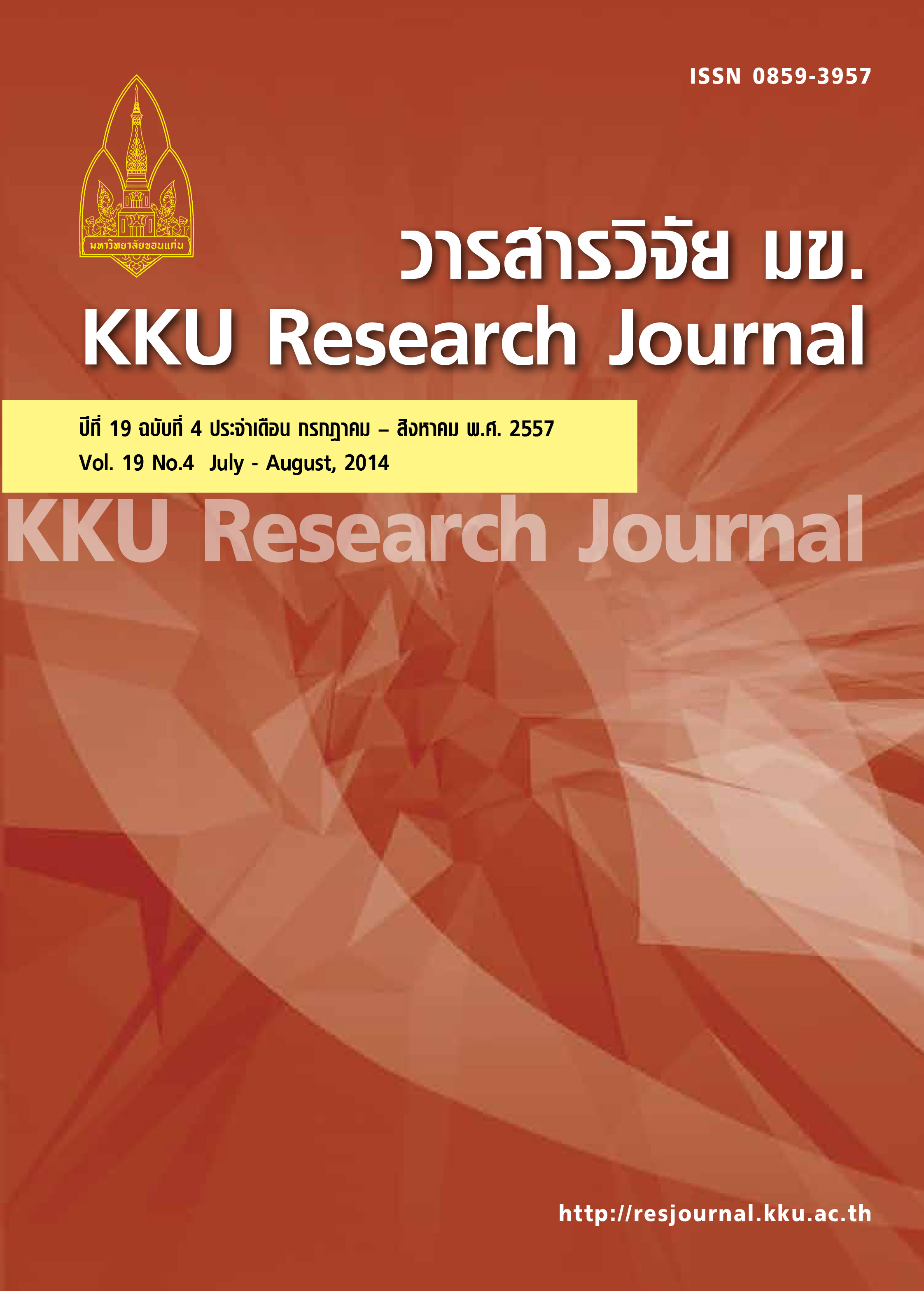Total phenolic compounds, antioxidant activity and nutritional values of sugar-free and reduced-fat milk-based ice cream enriched with selected herb ingredients
Main Article Content
Abstract
The objective of this research was to reduce the sugar and fat content in milk-based ice cream and to study the feasibility of using Thai herbs to flavour milk-based ice cream. Test formulations of reduced sugar and reduced-fat ice cream were developed using maltitol in place of sugar and a mixture of whey protein and maltodextrin (1:1) in place of fat. Gac fruit and the mixture of centella extract and green tea were selected to flavour the reduced-sugar and fat milkbased ice cream. Sensory testing was done in the laboratory with 20 untrained tasters. The test recipes were analyzed for nutritional values, total phenolic compounds, antioxidant activity, glycemic response and bacteria count. Data were analyzed using computer software to obtain mean, standard deviation, variance, comparison of means using Bonforoni method, and Friedman test of ranking at 95% confidence for the sensory evaluation scores. Results showed that there was no statistically significant difference between the sensory scores for the control and reduced-sugar ice cream made with maltitol in place of 50%, 75% or 100% of the sugar. The scores for the ice cream made with whey protein and maltodextrin (1:1) in place of 25% and 50% of the whipping cream in sugar-free ice cream were no different from those for the control sugar-free formula, and in fact the overall liking scores for the former 2 formulas were higher than for the control formula. Gac fruit extract and the mixture of centella extract and green tea were the herbal ingredients chosen for adding to sugar-free and 35% reduced fat ice cream. In the sensory evaluation, the overall liking score for the gac fruit formula was higher than for the mixture of centella extract and green tea formula to a statistically significant degree (p<0.05), but was not significantly different from the score for the control formula. The total phenolic compounds and antioxidant activity of the mixture of centella extract and green tea formula were higher than those of the gac fruit formula or the control formula, to a statistically significant degree (p<0.05). Fat content was reduced to be less than 1% but carbohydrate content by difference method was found to be increased. The glycemic response of the sugar-free formula with or without herb ingredient was lower than the control formula. The total bacteria count of all formulas was within the acceptable standard and neither E. coli nor S. aureus were detected. The new formulations showed a good potential of health benefit on blood glucose and a lowering risk of chronic diseases and is recommended for the commercial production.


